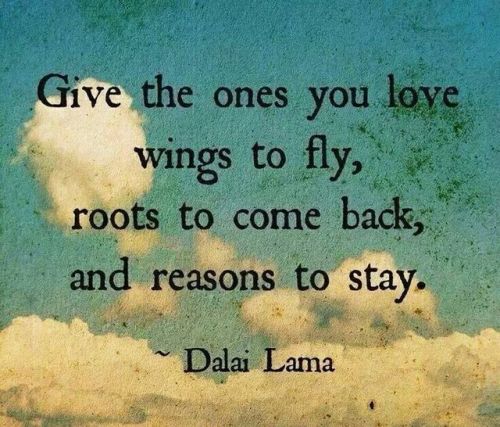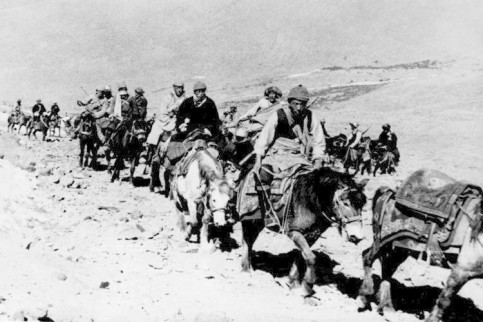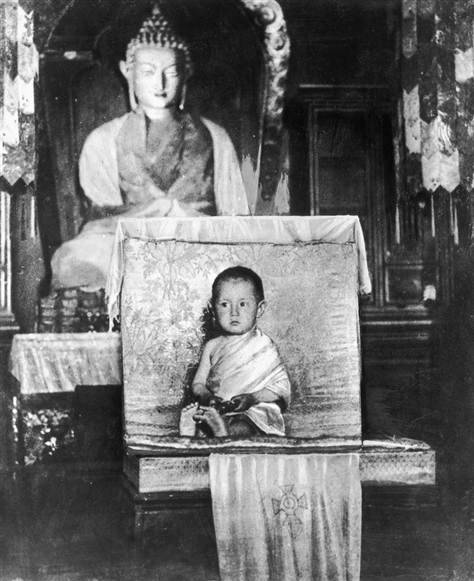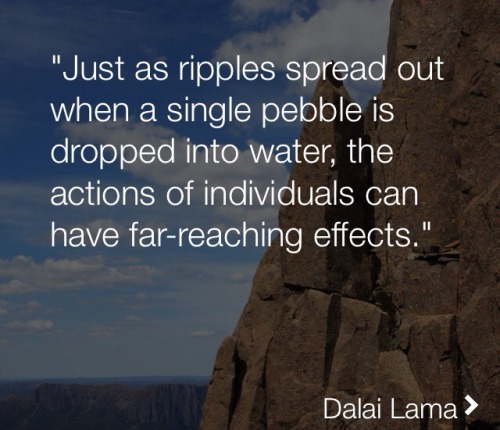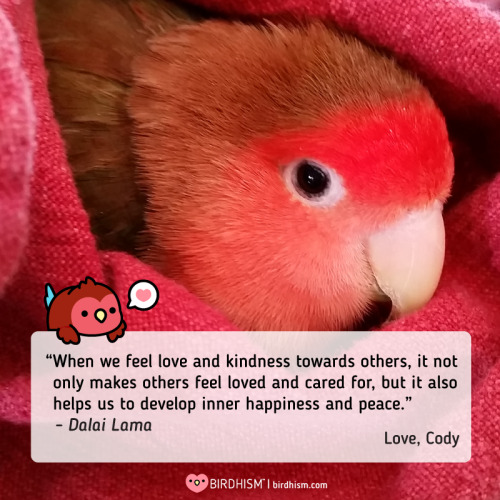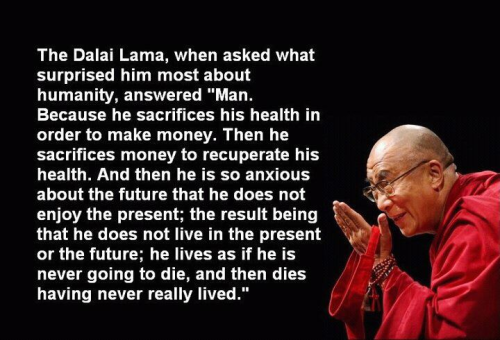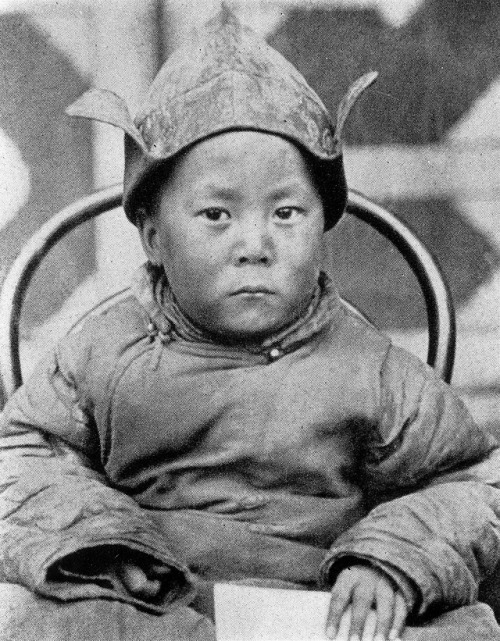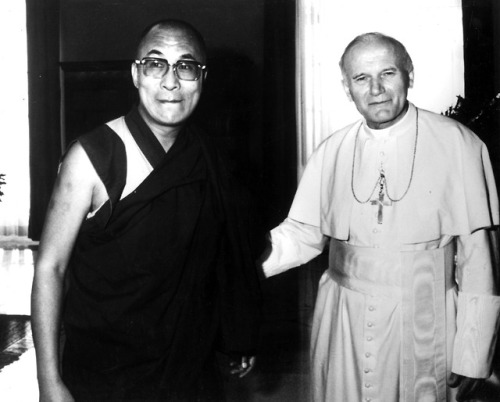#dalai lama
““Every day, think as you wake up, today I am fortunate to be alive, I have a precious human life, I am not going to waste it. I am going to use all my energies to develop myself, to expand my heart out to others; to achieve enlightenment for the benefit of all beings. I am going to have kind thoughts towards others, I am not going to get angry or think badly about others. I am going to benefit others as much as I can.””— Dalai Lama
(vianaturaekos)
To Your Health
“The Dalai Lama, when asked what surprised him most about humanity, answered; ‘Man. Because he sacrifices his health in order to make money.
Then he sacrifices money to recuperate his health. And then he is so anxious about the future that he does not enjoy the present; the result being that he does not live in the the present or the future; he lives as if he is never going to die, and then dies having never really lived.’“
Post link
Bildung muss ein globales Denken über die Zukunft der Welt vermitteln
Dalai Lama
Unsere heutige Bildung ist hauptsächlich an materiellen Werten und an Verstandesbildung orientiert. Aber die Realität zeigt, dass wir mit dem Verstand allein nicht zur Vernunft kommen. Es geht auch um Ziele wie Liebe, Mitgefühl, ein Gefühl für Gerechtigkeit, Achtsamkeit und Vergebung.
Dalai Lama
The Dalai Lama visited Gandan Monastery in Mongolia November 18-22. It was twenty degrees below zero Celsius when this picture was taken; he looks pretty cold. Tibetan buddhism was the most common religion in Mongolia until communist repressions began in the 1930s, but it has been making a comeback since the fall of communism in the 1990s. The Dalai Lama has made several visits to temples and monasteries in Mongolia.
Unfortuantely, the Dalai Lama’s recent visit to Mongolia caused some tension between Mongolia and China. China considers the Dalai Lama an anti-Chinese separatist leader. China canceled a joint mining project with Mongolia and imposed a tariff on Mongolian coal, which was pretty harmful to the Mongolian economy. The Mongolian government agreed that the Dalai Lama would be barred form visiting monasteries in Mongolia in the future.
Post link
soldiers of the Tibetan army in Shigatse, 1938
The Tibetan Army was established in 1913 by the 13th Dalai Lama, who had fled Tibet during the 1904 British invasion of Tibet and returned only after the fall of the Qing power in Tibet in 1911. During the revolutionary turmoil, the Dalai Lama had attempted to raise a volunteer army to expel all the ethnic Chinese from Lhasa, but failed, in large part because of the opposition of pro-Chinese monks, especially from the Drepung Monastery. The Dalai Lama proceeded to raise a professional army, led by his trusted advisor Tsarong
The Tibetan Army held the dominant military strength within political Tibet from 1912, owing to Chinese weakness during the Japanese occupation of China. With the assistance of British training, it aimed to conquer territories inhabited by ethnic Tibetans but controlled by Chinese warlords, and it successfully captured western Kham from the Chinese in 1917
Tibet’s military control was located in Qamdo from 1918. During this time, the Sichuan warlords were busy fighting the Yunnan warlords, allowing the Tibetan army to defeat the Sichuan forces and conquer the region. The Tibetan Army was involved in numerous border battles against the Guomindang (KMT) and Ma Clique forces of the Republic of China. In 1932, the KMT defeated the Tibetan army, driving them out of Kham.
Their first encounter with the People’s Liberation Army was in 1950, when they took over Dengo, and after failed negotiations initiated the Battle of Qamdo, marking the Chinese occupation of Tibet that continues to this day.
Post link
photos of ChushiGangdruk, Tibet’s volunteer guerilla army in 1959. They were made up of young males from Amdo and Kham (eastern Tibet) regions that border China.
initially, the US State Department refused to support Chushi Gangdruk, and they were forced to organize their own army and buy their weapons with their own money as well as meager donations from farmers sympathetic to the liberation struggle. After they formed, the CIA provided training and weapons to the troops for a short period, and Taiwan under Chiang Kai-shek funded them temporarily.
Chushi Gangdruk disbanded in 1974, effectively ending the Tibetan liberation movement, after Richard Nixon’s famous olive branch to Mao in 1973 that revived Sino-American relations, thus cutting all funding for the Tibetan freedom cause.
Post link

“Hey, Lama, hey! How about a little something, you know, for the effort, you know?”
March 17th 1959: Dalai Lama flees Tibet
On this day in 1959, Tenzin Gyatso - the fourteenth Dalai Lama, a central figure of Vajrayana Buddhism - fled Tibet for India. He fled following the 1959 Tibetan uprising against Chinese rule which broke out in the Tibetan capital of Lhasa, where the Dalai Lama lived. Fearing for his safety, he and around twenty of his entourage fled Lhasa on March 17th and embarked on a 15 day journey on foot over the Himalayan mountains to Dharamsala in India where they had been offered asylum. No news was heard of the Dalai Lama, and many feared their spiritual and political leader had been killed during the arduous journey. However, on March 30th he crossed into India and people learned that he was safe. He was followed by around 80,000 Tibetans who settled in the same area of India, leading to it becoming known as ‘Little Lhasa’. This place became the home to the Tibetan government-in-exile. Tibet remains under Chinese rule, and the Dalai Lama continues to try to find a peaceful negotiation for Tibetan self rule.
Post link
When you talk, you are only repeating what you already know. But if you listen, you may learn something new.
Dalai Lama
We can reject everything else: religion, ideology, all received
wisdom. But we cannot escape the necessity of love and compassion….
This, then, is my true religion, my simple faith. In this sense, there is no need
for temple or church, for mosque or synagogue, no need for complicated
philosophy, doctrine or dogma. Our own heart, our own mind, is the temple.
The doctrine is compassion. Love for others and respect for their rights and
dignity, no matter who or what they are: ultimately these are all we need.
So long as we practice these in our daily lives, then no matter if we are
learned or unlearned, whether we believe in Buddha or God, or follow some
other religion or none at all, as long as we have compassion for others and
conduct ourselves with restraint out of a sense of responsibility, there is
no doubt we will be happy.
Dalai Lama - born 6 July 1935 :)
Image: The Dalai Lama in exile arrives in Tawang, 1959 (via: blog.lefigaro)
Post link
The more kindness you put into the world, the brighter it begins to look. If you are having trouble being kind to someone unpleasant, walk away and come back after you had a chance to calm down. If this doesn’t help, wish the person well, and move on. Letting go can be an act of kindness.
Post link
Quien es tu amigo hoy quizá el día de mañana sea tu enemigo y quién creías ti enemigo se vuelva tu amigo
Dalai lama
“There is a saying in Tibetan, ‘Tragedy should be utilized as a source of strength.’ No matter what sort of difficulties, how painful experience is, if we lose our hope, that’s our real disaster.”
~ Dalai Lama
Post link
His Holiness the 14th Dalai Lama
His Holiness the 14th Dalai Lama Tenzin Gyatso describes himself as a simple Buddhist monk, but he is the spiritual leader of Tibet. He was born on July 6, 1935, to a farming family in the village of Taktser, in northeastern Tibet. At the age of 2, as a child named Lhamo Dhondup, he was recognized as the reincarnation of the previous 13th Dalai Lama, Thubten Gyatso.
The 14th Dalai Lama was not formally enthroned until Nov. 17, 1950, during the Battle of Chamdo with the People’s Republic of China. In 1951, the Dalai Lama and the Tibetan government were pressured into accepting the so-called Seventeen Point Agreement for the Peaceful Liberation of Tibet, which incorporated Tibet into the People’s Republic of China. Fearing for his life in the wake of a revolt in Tibet in 1959, the 14th Dalai Lama fled to India, from where he led a government in exile.
In 2001 the 14th Dalai Lama ceded his partial power over the government to an elected parliament of selected Tibetan exiles. His original goal was full independence for Tibet, but by the late 1980s he was seeking high-level autonomy instead. He continued to seek greater autonomy from China, but Dolma Gyari, deputy speaker of the parliament-in-exile, stated: “If the middle path fails in the short term, we will be forced to opt for complete independence or self-determination as per the U.N. charter.“
In 2014 and 2016, he stated that Tibet is willing to be part of China, but China should let Tibet preserve its culture and script.
Photo credits: Popperfoto/Getty Images, Hulton Archive/Getty Images, Vatican/Reuters, Reuters, Kevin Lamarque/Reuters, Kevin Frayer/AP, Christopher Furlong/Getty Images
See more photos from the life of His Holiness the 14th Dalai Lama our other slideshows on Yahoo News.
Post link







